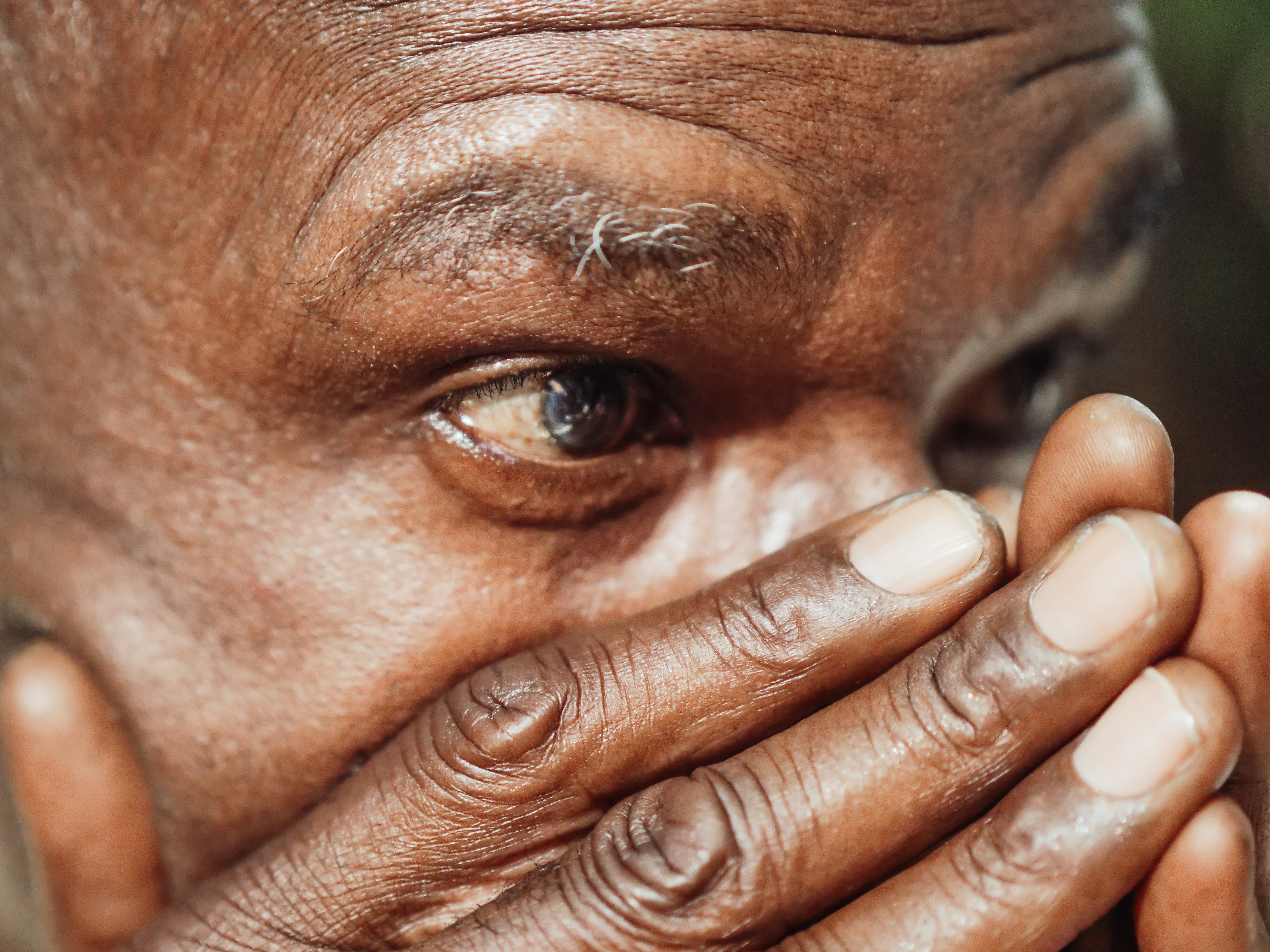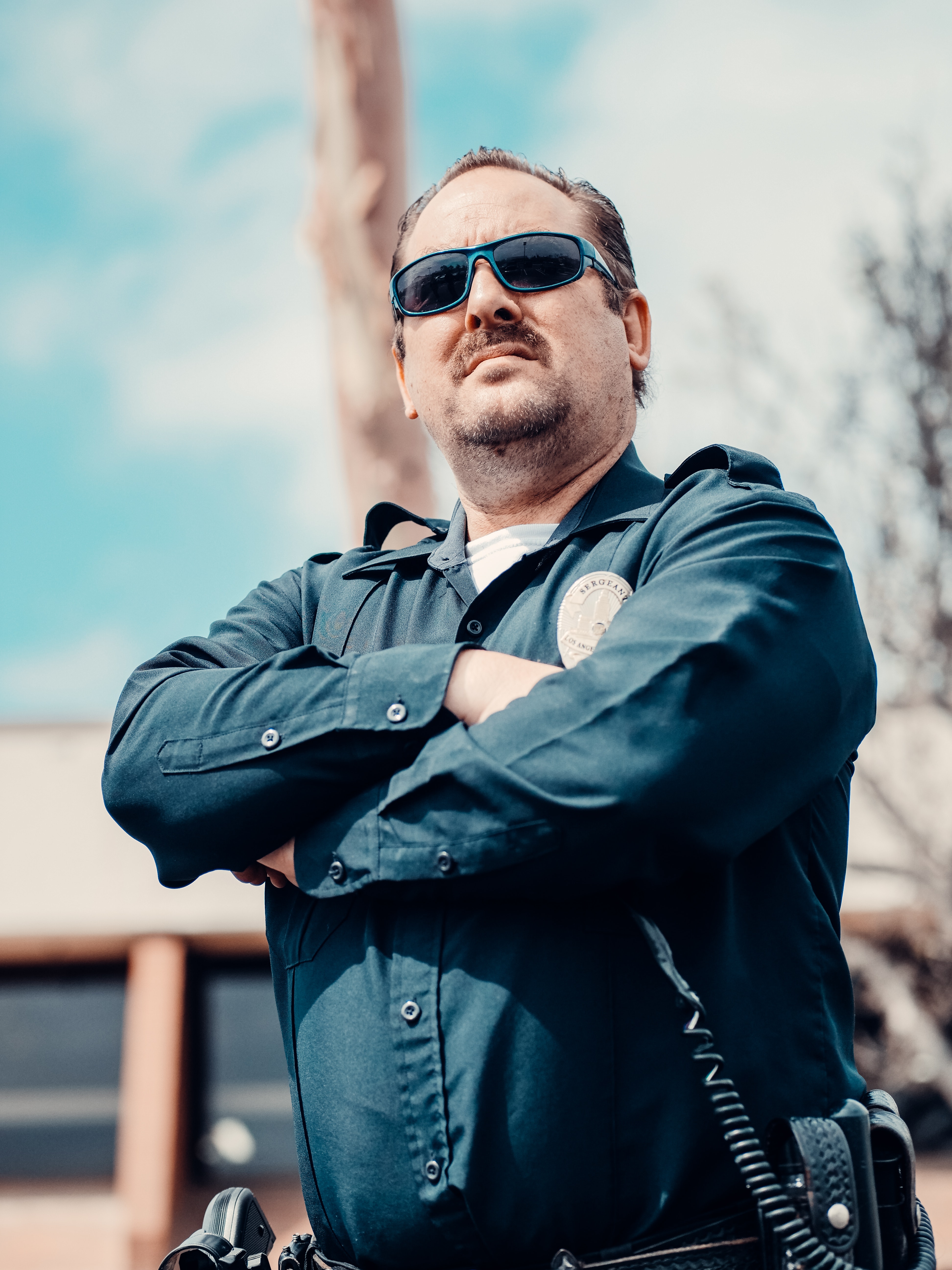
In the heart of Lower Manhattan, an unusual 29-story skyscraper, devoid of windows, stands tall and mysterious. Its code name is Titanpointe, and it is located at 33 Thomas Street. This building has baffled New Yorkers for years.
The building, constructed in 1974, was designed to withstand atomic blasts and was initially intended to house vital telecommunications equipment. It was envisioned as a communication nerve center, fortified against nuclear threats, by the architectural firm John Carl Warnecke & Associates.
This imposing structure, a gray tower of concrete and granite soaring 550 feet into the New York skyline, remains, unlike any other building in its vicinity. Unlike neighboring residential and office buildings, it does not have a single window and remains unilluminated. At night, it takes on an eerie presence, and by day it casts a giant shadow, its square vents emitting a faint hum, often drowned out by the city’s bustling sounds.
For decades, 33 Thomas Street, also nicknamed the “Long Lines Building,” has captured the imagination of New Yorkers as one of the city’s weirdest and most iconic skyscrapers. But the true purpose of this enigmatic structure has remained largely concealed, shrouded in secrecy.
The Secret Behind 33 Thomas Street
Beyond its enigmatic exterior, 33 Thomas Street conceals a deeper secret. This building appears to be more than just a telecommunications hub. Evidence from documents obtained by NSA whistleblower Edward Snowden, along with architectural plans and interviews with former AT&T employees, suggests that 33 Thomas Street served as an NSA surveillance site, code-named Titanpointe.
The NSA’s involvement goes beyond mere speculation. Inside the building, there’s a major international gateway switch that routes phone calls between the U.S. and countries worldwide. The NSA is believed to have tapped into these calls from a secure facility within the AT&T building. This covert surveillance program has targeted not only international organizations like the United Nations, the International Monetary Fund, and the World Bank but also numerous countries, including U.S. allies.
While AT&T has cooperated with the NSA on surveillance, few details have emerged about the specific role of facilities like 33 Thomas Street in carrying out top-secret programs. The Snowden documents, however, provide unprecedented insight into how NSA equipment has been integrated into AT&T’s network in New York City. This integration reveals the methods and technology employed by the agency to gather communications data from the company’s systems.
The NSA’s presence within this iconic skyscraper raises questions about the boundaries of surveillance in the modern world. As Elizabeth Goitein, co-director of the liberty and national security program at the Brennan Center for Justice, points out, “This is yet more proof that our communications service providers have become, whether willingly or unwillingly, an arm of the surveillance state.” The deep integration of the NSA within domestic communications infrastructure challenges the notion that such surveillance can be neatly confined to non-American targets.
Old Man Goes to Visit Daughter for His 80th Birthday, She Doesn’t Let Him Enter Her House – Story of the Day

Richard visits his daughter to celebrate his eightieth birthday with her, but she answers the door in tears and sends him away. Richard suspects trouble and realizes he’s right after peeking through her front windows.
Richard tapped his fingers nervously against the steering wheel as he drove. Deidre used to drive down every Thanksgiving, but that stopped after his wife’s funeral four years ago. Now, there were only weekly calls.
Richard spread his arms wide as Deidre appeared in the doorway. “Surprise!” he yelled.
“Dad? What are you doing here?” she asked, tears rolling down her cheeks.
“I came to celebrate my birthday with you…it’s the big eight-o!” Richard replied, but the joy in his voice trailed off quickly. “What’s wrong, honey? Why are you crying?”

For illustration purposes only. | Source: Pexels
“It’s nothing; everything’s fine,” Deidre quickly wiped her tears and smiled a little. “I just…I wasn’t expecting you, and this isn’t really a good time. Sorry, Dad, but I, uh, need to focus. On my work. Look, I’ll call you. We’ll have dinner later, okay? Sorry.”
Deidre shut the door, leaving Richard hurt and confused. Something was terribly wrong. Was Deidre in trouble?
Richard stepped back from the front door but didn’t leave. He stepped over the short, flowering shrubs lining the path and snuck up to peek through the windows.
Two rough-looking men were in the sitting room with Deidre.
“Who was that?” One of them asked in a rough voice.
“Nobody,” Deidre lied in a shaky voice. “Just a neighbor’s kid…pulling a doorbell prank and running away.”
“Back to business then,” the second man said. “You’re now six months behind on your loan repayments, Deidre. Mr. Marco’s getting impatient.”

For illustration purposes only. | Source: Pexels
“I just need more time. Business is sure to pick up again in the winter,” she pleaded.
“Time is one thing you haven’t got, sweetie,” the man replied, pulling out his gun. “People who owe Mr. Marco money don’t have a great life expectancy and end up feeding the fishes in the lake…” He pointed the weapon at her.
Terror froze Richard in place. But soon, the man stepped back with a look of disgust and tucked the gun away in the waistband of his trousers.
“Look around this dump and see if there’s anything valuable we can take to Mr. Marco, Danny,” he ordered. “She’s a businesswoman, so there must be a computer or some kind of equipment around here.”
”But I need those things!” she cried. “I can’t make money without my equipment!”
The man patted the butt of his gun. ”Boo-Hoo. I can still change my mind, you know. Don’t be ungrateful, now.”

For illustration purposes only. | Source: Pexels
The men ransacked her home before they stormed out, leaving Deidre curled up sobbing on the floor.
Nothing made sense to Richard because Deidre’s business was doing well. At least that’s what she had told him. But now, Richard could sense something was amiss. Deidre needed his help.
The men loaded several appliances from Deidre’s home in their vehicle.
When they finally drove away, Richard followed them.
The men stopped at a two-storeyed brick building downtown that looked like a bar. While it was closed, the door was unlocked. No one on the staff stopped Richard as he entered the building.
The men had joined a large table where several other rough-looking men were seated. One of them stood and swaggered toward him.
“The club’s closed,” he growled. “Come back later.”
“I’m here to discuss Deidre’s debt,” Richard announced.

For illustration purposes only. | Source: Pexels
“Oh?” The man seated at the head of the table rose and stared at Richard. He looked like a gentleman except for a nasty scar above his left eye. Richard guessed he was Mr. Marco.
”How much does she owe you?” Richard asked.
Mr. Marco smirked. “A good samaritan, huh? Deidre took out a business loan of $80,000 from me. She was supposed to pay me back from her monthly profits, only she never made any.”
”I have around $20,000 in my savings,” Richard gulped fearfully, shaken Deidre had borrowed such a big sum.
”That’s only a quarter of what she owes us.” Mr. Marco sighed. “But there’s something you can do to make up the difference.”
Richard didn’t like the sound of that, but he had to do whatever it took to save his daughter from the mess she’d gotten herself into.
”What do you want me to do?” he asked.

For illustration purposes only. | Source: Pexels
Mr. Marco grinned at Richard and beckoned him closer to the table.
”My partner and I recently started a small business importing cars to Canada, but some of the paperwork has been delayed, so we’re having difficulties getting the…’merchandise’…across the border. A kind, innocent-looking Grandpa like you should have no trouble crossing the border in one of our cars.”
Richard had no choice but to agree. Later that night, he pulled into a gas station near the border town to use the bathroom and parked beside a patrol.
“Jesus!” he gasped as the German Shepherd in the back of the police cruiser began barking at him and pawing at the window.
Service dogs were trained not to bark at random people unless…Oh, man.
He quickly climbed back in the car, a Valiant, and started reversing as the police dog went crazy.
Two cops hurried out of the gas station store and yelled at him to stop as they glanced at him. The GPS app voiced directions, but Richard shoved it in his pocket to silence the darn thing.
He pushed the Valiant to its limits as he wove through traffic, leaving a trail of outraged drivers and narrowly avoided collisions in his wake. The sirens blared behind him.

For illustration purposes only. | Source: Pexels
Richard soon spotted a narrow, unmarked dirt road veering into the forest ahead. He sharply turned, leaving the road behind him as he raced into the forest. The muddy trails were awful to navigate, but Richard pushed on.
He turned down a narrow track leading downhill. Then, he turned up a slight rise and instantly regretted it.
The car was now stuck in a precarious position, balanced on a narrow rise above a wide river. Richard tried to reverse back the way he came, but the tires spun without getting traction.
In fact, the car was sliding closer to the water.
“No!” Richard desperately pulled up the parking brake, but it didn’t work.
The car’s nose hit the river with a loud splash, sending a wave of dark water flooding over the bonnet. Richard shoved the car door open, desperate to escape the sinking vehicle.
The pressure from the water started to push the car door shut against Richard’s legs. Richard splashed around in panic as the river filled the interior.

For illustration purposes only. | Source: Pexels
As the water level crept up his face, he tipped his head back, took one last breath, and pulled himself underwater.
Richard squeezed himself out of the opening and pushed himself up toward the surface. He took in a lungful of air and swam toward the river bank.
Reaching land made Richard realize how close he was to death. He was thankfully breathing. But he still needed to do something about the $80,000. So Richard hitchhiked home.
”I need to mortgage my house,” he told the bank assistant. ”And I need the cash in my bank account fast.”
Richard waited impatiently as the bank employee processed the paperwork. He jumped in fright when Deidre called him.
“Some thugs from a local gang were just here asking about you, Dad…what is happening?”
“Tell them I’ll be there soon. I arranged to pay off your debt for you. I don’t understand why you didn’t come to me first, Deidre, but this isn’t the time to discuss that.”

For illustration purposes only. | Source: Pexels
Richard ended the call and signed the paperwork. He didn’t want to give up the home where he had created memories with his family, but it was the only way to help Deidre.
A few hours later, he pulled into the club’s parking lot in a rented car and headed toward the entrance.
”Dad, wait!” Richard looked back as Deidre ran toward him.
”I won’t let you face those thugs alone,” she said. ”I still don’t understand how you found out about this mess or how you got the money to repay them, but the least I can do is stand by you while you save me.”
Richard studied the determined look in Deidre’s eyes and knew he couldn’t convince her to leave. As they entered the club, the thugs herded him and Deidre toward the table.
Richard placed his duffel bag, which contained the cash he’d withdrawn after the mortgage went through, and put it on the table.
”Here’s the $80,000 Deidre owed you plus another $15,000 to cover the cost of your car. I, uh, got into some trouble, and the car ended up in a river.”

For illustration purposes only. | Source: Pexels
Mr. Marco’s mouth twisted angrily, and he thumped his fist against the table.
“You have the audacity to offer me a measly $15,000? After you come in here and tell me you sank the $100,000 shipment hidden in that car? That doesn’t even BEGIN to cover what you now owe me.”
The gangster grabbed the duffel bag and threw it to one of his thugs.
”You know, Deidre, I really believed in you, but sometimes, in business, you’ve got to know when to cut your losses.”
He removed a gun from his suit jacket and pointed it straight at Deidre’s forehead.
Richard pulled Deidre behind him. “No, please! This is all my fault! Don’t punish her!”
”Well, you made a good point.” The gangster shrugged, and the next moment, Richard was staring down the gun barrel.

For illustration purposes only. | Source: Pexels
But suddenly, they heard police sirens outside.
Mr. Marco turned and ran toward the back of the club as loud gunfire boomed and shook the place.
Father and daughter crawled under the table. There was chaos in the club, and as Richard looked into his daughter’s fear-filled eyes, he knew he had to get her to safety, no matter what.
Richard and Deidre pulled one of the tables over and barricaded themselves in a corner. They hid there until the police escorted them to safety. Thankfully, Mr. Marco was apprehended.
”Are you certain you don’t have any heart-related health issues?” Richard shook his head at the paramedic while in the ambulance.
Richard swallowed hard when the police detective approached the ambulance.

For illustration purposes only. | Source: Pexels
“Sir, what were you and your daughter doing in this club today?” the detective asked sternly.
Richard explained about Deidre’s loan and how they’d come to the club that day to repay it. He hoped he might get away with not mentioning the car he sank in the river.
The detective glanced at Deidre. “If we hadn’t found a car full of contraband in the river, we wouldn’t have been here to rescue you. You shouldn’t be taking loans from such disreputable people, miss.”
“A car in the river?” Richard asked nervously.
“It was registered to Mr. Marco’s cousin, which was exactly the lede we needed to take this gang down,” replied the officer.

For illustration purposes only. | Source: Pexels
Richard sighed in relief. He was in the clear.
The cops let him and Deidre go once they provided their statements.
”I owe you a huge apology, Dad. I dragged you into this whole mess,” Deidre apologized as they walked to the front, where Richard’s car was parked.
Tears filled her eyes. “I didn’t know how to tell you. How does anyone tell their father that they’re a huge failure?”
“You are not a failure!” Richard put his hands on Deidre’s shoulders. ”Maybe your business idea didn’t work out as well as you’d hoped, but you tried, Deidre. I wish you’d felt comfortable enough to tell me what was really going on in your life. Heck, I just wish you felt you could be as close with me as you were with your mother,” he continued. ”I don’t think you’ve been ‘fine’ for quite a while now.”
Deidre burst into tears, and Richard put an arm around her. “It’s okay, honey,” he whispered soothingly. “Everything’s going to be okay.”

For illustration purposes only. | Source: Pexels
Tell us what you think about this story, and share it with your friends. It might brighten their day and inspire them.
If you enjoyed this story, you might like this one about a woman who spots her husband taking his wedding ring off before leaving for work. She decides to follow him, only to discover something shocking.



Leave a Reply